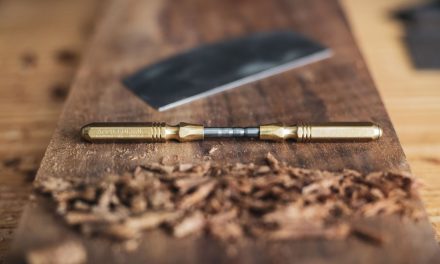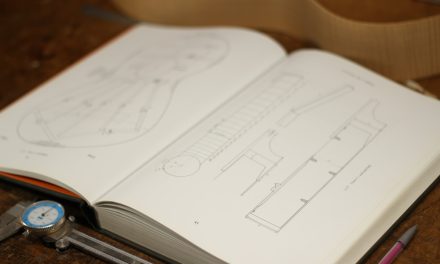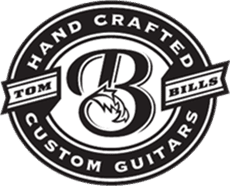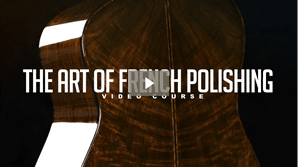
Today, I’m going to share what I believe is the secret to creating elegant and beautiful guitar inlay design.
The story of how I realized this secret and learned to put it into practice, begins in the late 1990s when I started building my guitars professionally.
As a young and ambitious luthier, I was primarily focused on the technical part of the inlay technique.
Although the technique of routing and cutting the inlay is undoubtedly critical, that mindset led me to a way of thinking that prioritized adding more complexity in an attempt to create “Better” inlay work.
Over time, I realized that the true impact or value of the inlay is not only its complexity and level of technical difficulty.
Rather, it’s the core message, feeling, or emotion it conveys that determines its overall impact.
Sometimes, a great design needs some complexity, but the best design isn’t always the most complex or challenging.
Many times, it’s the simplest, most elegant (and easiest to execute) design that will integrate wholistically with the guitar and elevate its impression of elegance and mastery.
This is fantastic news if you’re just getting started with inlay!
If we devote a little time to refining and distilling our designs to their most essential and polished form, we can create inlays that tell our story, convey emotion, and unify our guitar design.
And, due to its elegant and essential form, it is often easier to inlay.
Let’s get back to our story of how I discovered this simple yet profound secret, and how you can use it too.
Learning To Keep It Simple
I’ve always been very artistic and creative. As far back as I can remember, I have been building things with my hands, creating artwork, making music, writing, and, eventually, even making digital things.
Early on, I had the same unquenchable need to make beautiful things that I have now.
Back then, that meant bigger, more complex, and more challenging to do in some way.
But it was my high school art teacher, Mr. Coughlin, who first helped me understand the value of keeping my designs simple in 1992.
He told me to K.I.S.S. my paintings and patiently explained why it was so important.
In case you haven’t heard of it, “K.I.S.S.” stands for “Keep It Simple, Stupid.”
It’s a simple reminder to always look for every opportunity to remove the complexity that doesn’t add to the piece’s overall message, emotion, story, or goal.
As a young, rebellious teenager, I only understood a small part of what that was about. But even then, with only a dim understanding of the concept, it helped me significantly improve my work and approach.

How To K.I.S.S. Your Guitar Inlay Design
Years later, when I started my professional guitar-building career, I seemed to have forgotten about the K.I.S.S. principle.
Although I knew instinctively that I needed to simplify and refine the shape and contours as I sculpted the tops and backs of my archtop guitars, there was a total disconnect in how I approached other areas of the guitar.
Then, one fall day, circa 1999, as I was designing the inlay on one of my guitars, I remembered Mr. Coughlin and his advice to “K.I.S.S.” my paintings.
In an instant, I saw clearly that I needed to apply the K.I.S.S. principle to all areas of my designs—including the inlay.
As I processed this freshly revealed insight, I noticed that the leaves of the giant oak trees in my yard were gently cascading down in their annual and graceful dance.
I was struck by the flow and the lines of the leaves as they fell.
There was an elegance to the way they floated so gently through the air.
There was an organic and unmeasurable quality to the essence of what I felt and saw that day, there in that moment.
I felt the leaves would make a lovely inlay for a guitar fingerboard, so I got to work.
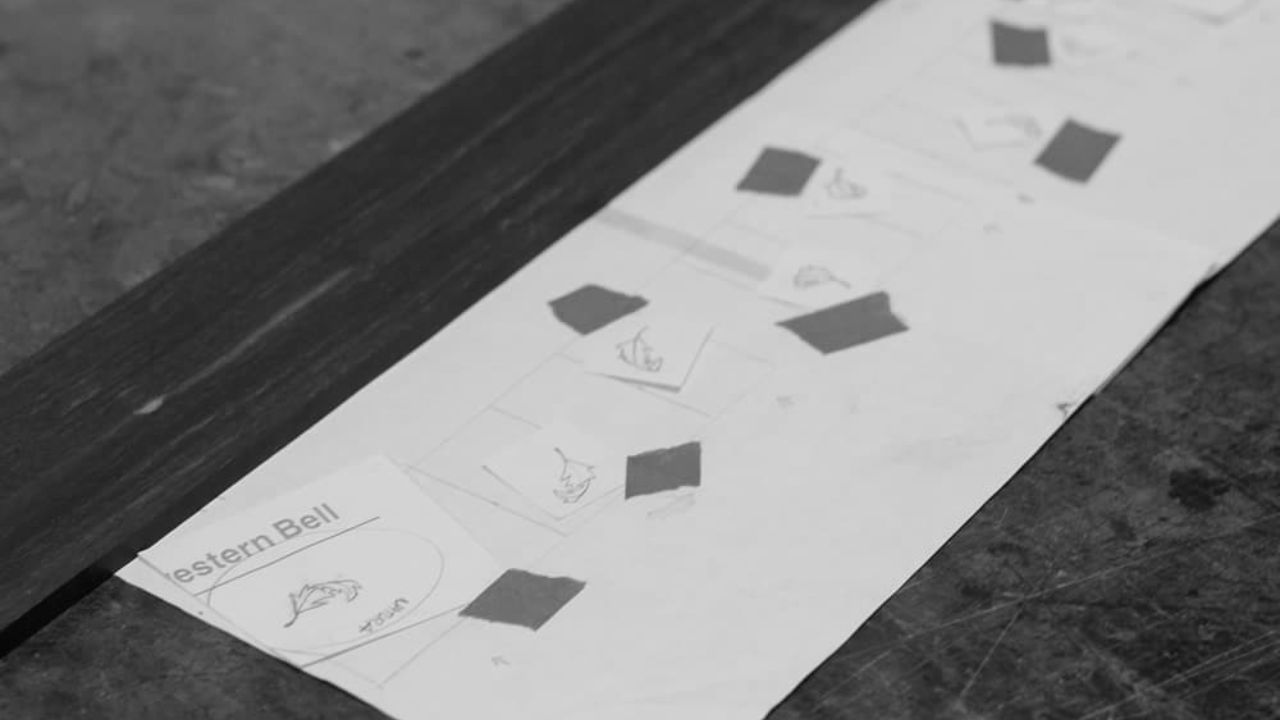
Of course, I first drew Oak leaves. I was careful to get the correct number of points on the leaves, the right shape, and every other detail to be photo-perfect.
Then I got worried; maybe they should be Maple leaves because the guitar was made of maple, so I started version 2.
But then, I remembered the way I FELT when the leaves were falling.
I realized that the type of leaf wasn’t what filled me with awe and inspiration at the sight of the leaves cascading slowly to the ground.
I immediately sketched a new version. Only this time, I drew some that were “just leaves”—not a particular type and not even perfect or photorealistic.
I knew that to effectively communicate the feeling that touched and inspired me, I needed to shift the focus from the specific leaf shape to the grace and natural elegance of the falling pattern. Even then, I still had to force myself to make it as simple as possible.
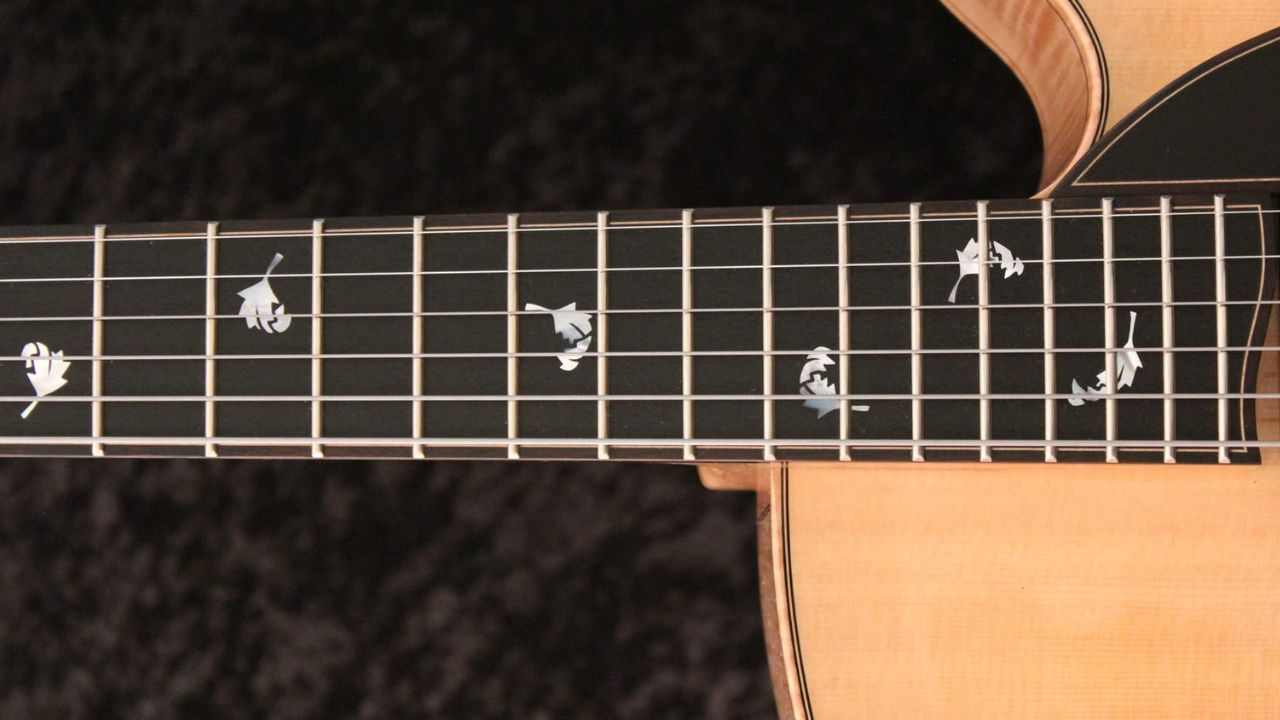
Writing this now makes me think about the first time I saw The Water Lillies by Monet in N.Y. What a feeling those paintings convey!
They are still some of my favorites to this day.
I love them because of the FEELING I get when I look at them, not the measure of photorealism, but the way Monet communicated the feeling he saw and experienced through his medium to me and countless others.
Art is a language for communicating.
Take a look at Monet’s painting below; how does it make you feel?
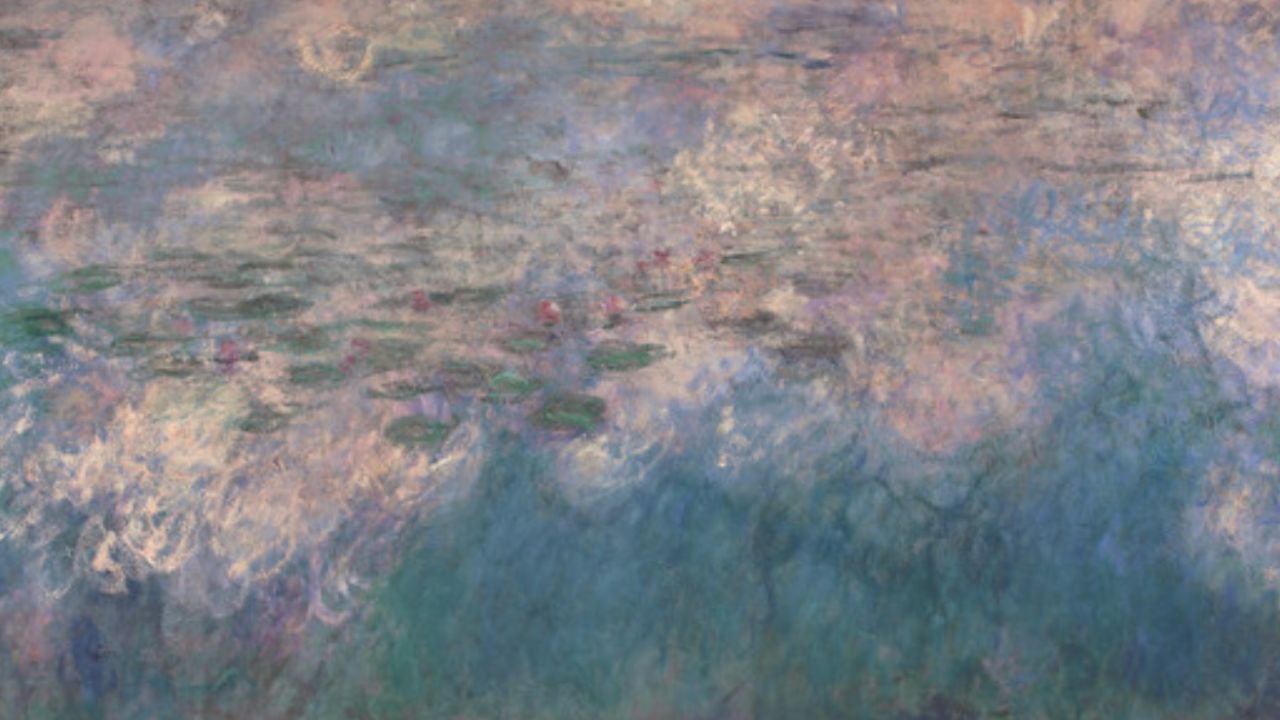
(Check out a larger photo of this painting here)
Our guitar inlay, like one of the colors on Monet’s palette, is just one of many elements we can use to infuse our guitars with emotion and share our stories.
Now, my falling leaf inlay is a constant reminder to me to keep it simple.
I even added it to my logo to ensure I would never forget to continue refining, learning, growing, and looking for ever-better ways to tell my stories and convey my messages through my work.
Guitar Inlay Technique
Once you have your newly refined and elegant inlay design, the next step is to learn the proper technique for inlaying it.
If you would like some help with that part too, you can check out my Guitar Inlay Course.
In it I walk you through every step of my inlay process, including materials, tools, engraving, and special techniques.



